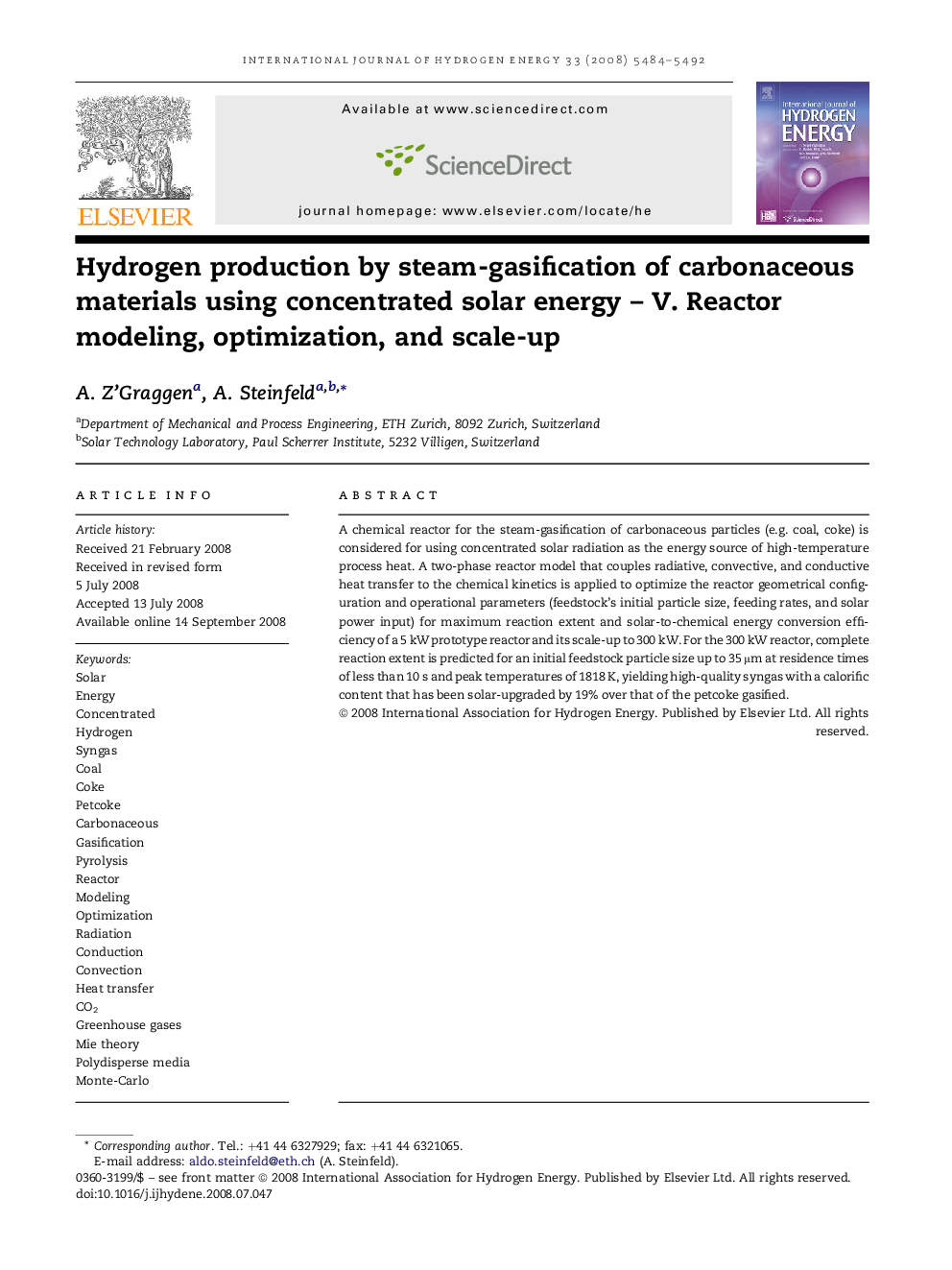| Article ID | Journal | Published Year | Pages | File Type |
|---|---|---|---|---|
| 1278484 | International Journal of Hydrogen Energy | 2008 | 9 Pages |
A chemical reactor for the steam-gasification of carbonaceous particles (e.g. coal, coke) is considered for using concentrated solar radiation as the energy source of high-temperature process heat. A two-phase reactor model that couples radiative, convective, and conductive heat transfer to the chemical kinetics is applied to optimize the reactor geometrical configuration and operational parameters (feedstock's initial particle size, feeding rates, and solar power input) for maximum reaction extent and solar-to-chemical energy conversion efficiency of a 5 kW prototype reactor and its scale-up to 300 kW. For the 300 kW reactor, complete reaction extent is predicted for an initial feedstock particle size up to 35 μm at residence times of less than 10 s and peak temperatures of 1818 K, yielding high-quality syngas with a calorific content that has been solar-upgraded by 19% over that of the petcoke gasified.
